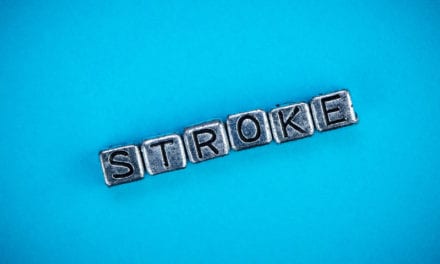More than 200 attendees witnessed the ribbon-cutting ceremony for the Tim and Caroline Reynolds Center for Spinal Stimulation at Kessler Foundation in West Orange on January 24.
The Reynolds Center for Spinal Stimulation, which is dedicated to restoring function to people with paralysis, occupies an 11,000-square-foot addition to the West Orange Campus shared by Kessler Foundation and Kessler Institute for Rehabilitation. The Center, which provides space for more than 50 researchers, houses five specialized laboratories equipped with the latest technologies. This new facility is named in honor of Tim and Caroline Reynolds of New Jersey, whose philanthropy supports advances in spinal cord injury research, according to a news release from Kessler Foundation.
Gail Forrest, PhD, a leading scientist in the application of electrical stimulation in spinal cord injury research, serves as director of the Reynolds Center for Spinal Stimulation, and Steven Kirshblum, MD, as co-director. Kirshblum is senior medical officer and director of the Spinal Cord Injury Program at Kessler Institute, chief academic officer for the Select Medical Rehabilitation Division, chair of the Department of Physical Medicine and Rehabilitation at Rutgers New Jersey Medical School, and chief medical officer at Kessler Foundation.
Among those in attendance were First Lady of New Jersey Tammy Murphy, US Rep. Mikie Sherrill of the 11th Congressional District (NJ), Senator Tom Kean Jr. from New Jersey’s 21st Legislative District, Assemblywoman BettyLou DeCroce from the 7th Legislative District, Tim and Caroline Reynolds, the Foundation’s Board of Trustees, and the leadership and staff of the Foundation and Kessler Institute.
“Today marks a turning point in spinal cord injury research,” says Rodger DeRose, president and CEO of Kessler Foundation, in the release. “Based on the work of our scientists and their colleagues, we are confident that our investment in the Reynolds Center will reap returns that will forever alter the world’s perspective of spinal cord injury.”
The Reynolds Center will also contribute to New Jersey’s reputation in the scientific community, DeRose emphasizes. “Exploring the complexities of paralysis means attracting top talent and competing for federal and state research grants. Thanks to the support of our donors, especially Tim and Caroline Reynolds, we have established the groundwork for success.”
Research in spinal stimulation has been underway for more than a year at the Foundation, where Forrest’s team is applying spinal stimulation externally, over the area of injury, to improve individuals’ ability to move their arms and legs paralyzed by spinal cord injury. The next step, according to Forrest, is to apply stimulation directly to the spinal cord, a promising technique called epidural stimulation developed by researchers at the University of Louisville. Researching both methods – transcutaneous and epidural – places the Reynolds Center in the forefront of spinal stimulation research, per the release.
“We now know that the spinal cord is not just a conduit for nerve impulses to travel from the brain to end organs, but may have its own inherent abilities,” Kirshblum notes. “Spinal stimulation can jump-start the cord and enable the person to take advantage of those abilities,” he explains.
“The Reynolds Center for Spinal Stimulation allows us take the lead in setting new goals for recovery after spinal cord injury. While improving mobility is one of those goals, it is part of a bigger picture. We will also look at ways to improve spasticity, pain, control of blood pressure, cognition, fatigue, sexual function, and other complications that adversely affect the quality of life of people with spinal cord injury.”
The implications of spinal stimulation research extend beyond those with paralysis and weakness caused by spinal cord injury, Kirshblum adds. “What we learn here at the Reynolds Center has the potential to help people with other disabling conditions as well.”
[Source(s): Kessler Foundation, PRWeb]



